Sardinia is a beautiful Italian island situated in the Mediterranean Sea. The island has a diverse range of flora and fauna, including various species of birds.
Sardinia is a nesting and breeding ground for many bird species, both indigenous and migratory. Its varied landscapes provide a natural habitat for a significant number of rare and endangered bird species.
From open coastal areas to mountainous terrain, Sardinia’s diverse ecosystems offer an ideal environment for birdwatchers to explore the island’s avian diversity. Bird enthusiasts can delight in observing over 200 bird species that call this island their home or stopover during migration.
In this article, we will provide a comprehensive introduction to the fascinating birdlife found in Sardinia.
1. Rose-Ringed Parakeet
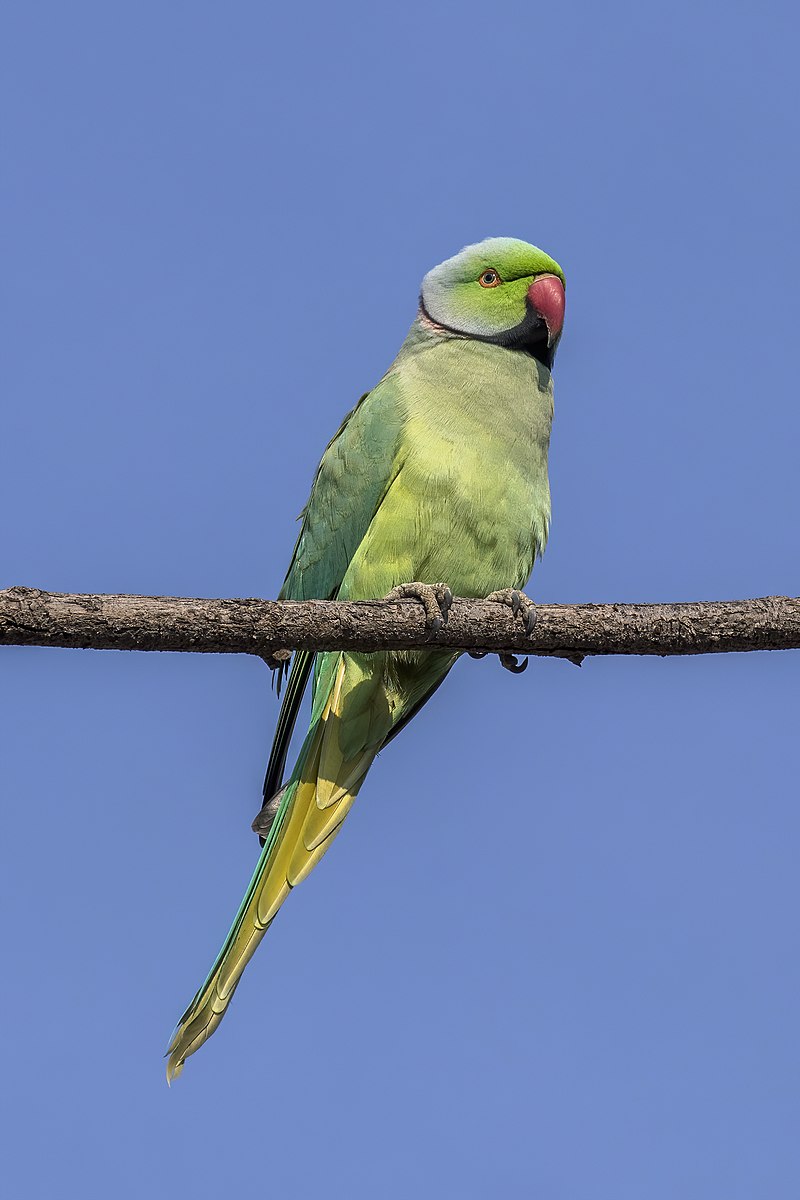
The Rose-ringed parakeet is a medium sized bird in the family Psittacidae. Native to Africa and India, it has been introduced into many other parts of the world where feral populations have now established themselves.
The most distinctive feature of this species is its colorful neck ring ranging from pink to purple which gives them their name.
However, males often display more vibrant colors than females do. This beautiful bird can also imitate human speech quite well making them popular pets worldwide.
In addition they are very social creatures preferring large flocks when out in nature or as part of aviaries during captivity. With proper care these birds can live up to 30 years.
Scientific classification:
| Kingdom | Animalia |
| Phylum | Chordata |
| Class | Aves |
| Order | Psittaciformes |
| Family | Psittaculidae |
| Genus | Psittacula |
| Species | P. krameri |
Also Featured In: Common Birds in India, Common Birds in the Cities
2. Great Cormorant
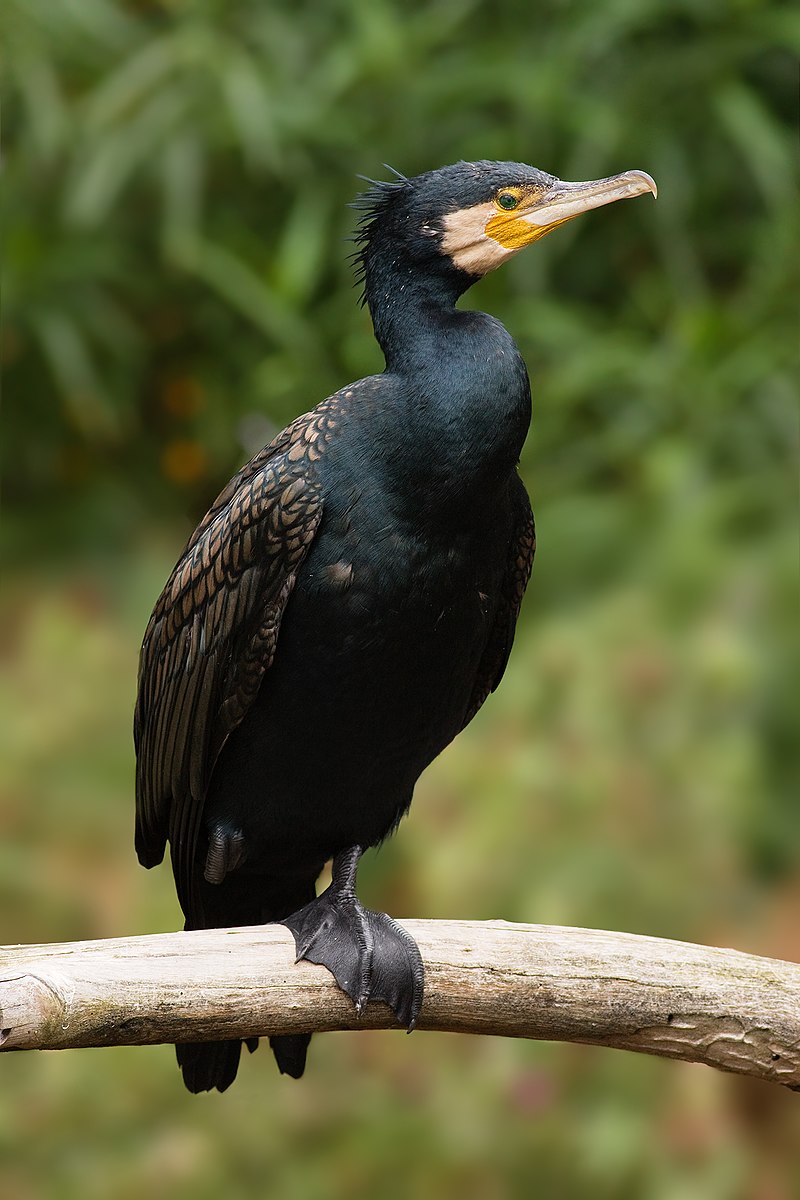
The Great Cormorant is a large seabird belonging to the cormorant family. It has many names, including Black Shag in New Zealand and Large Cormorant in India.
Its striking black feathers make it easy to recognise along coastlines or near bodies of water. The bird can measure up to 1 metre long with a wingspan of around two metres and weighs roughly 3 kilograms.
In flight, its neck is stretched out straight ahead while its bill points downwards – an unmistakable sight for any keen observer.
Cormorants are strong swimmers and excellent divers, frequently going underwater in search of food such as fish or crustaceans that they scavenge from the ocean floor.
They live primarily on coasts but have also been seen inland where there are suitable waterways available – providing another opportunity for nature lovers hoping to catch a glimpse of this impressive species.Scientific classification:
| Kingdom | Animalia |
| Phylum | Chordata |
| Class | Aves |
| Order | Suliformes |
| Family | Phalacrocoracidae |
| Genus | Phalacrocorax |
| Species | P. carbo |
Also Featured In: Native Birds Of Germany, Common Estonian Birds
3. Greater Flamingo
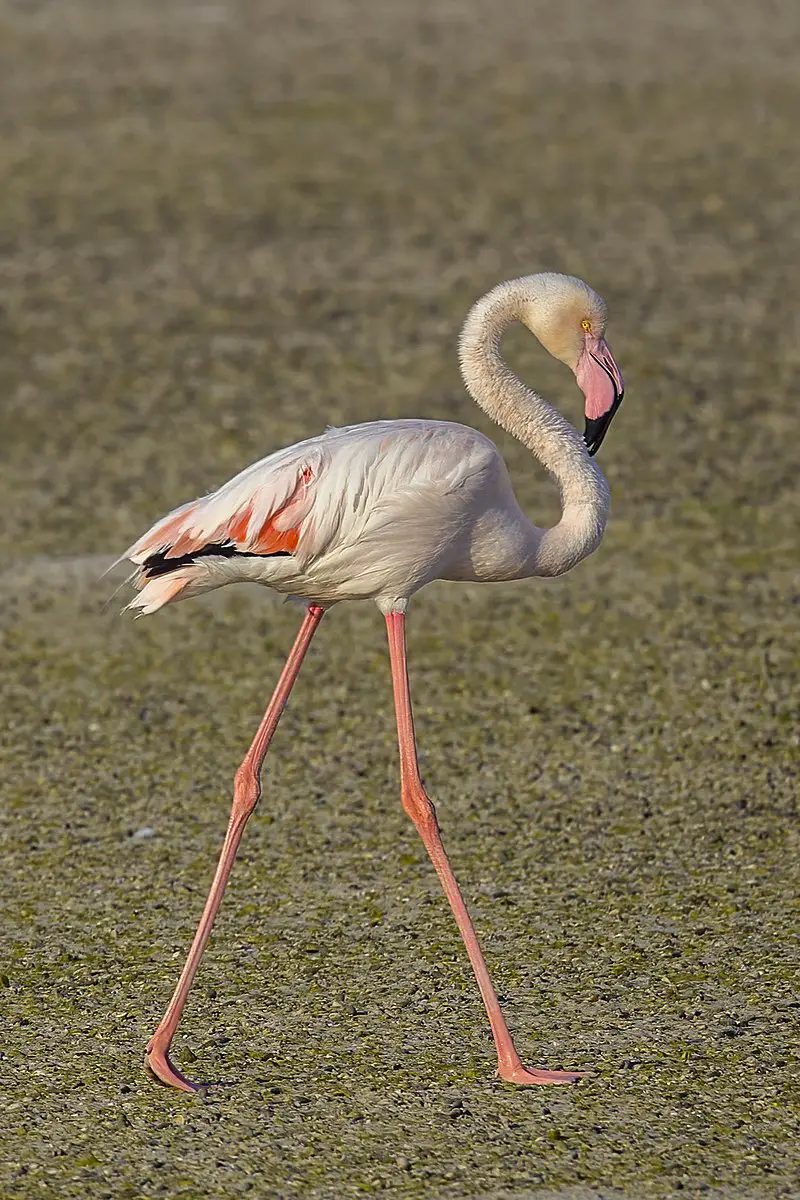
The Greater Flamingo is an impressive bird belonging to the Phoenicopteridae family. It’s one of the most widespread and largest species among flamingos with a range covering Africa, India, Middle East and southern parts of Europe.
The bird was described by Peter Simon Pallas in 1811 but it wasn’t until recently that it was distinguished from American Flamingo (Phoenicopterus ruber), due to differences in coloration between them.
This large-bodied wading bird stands tall at 1m on average and has bright pink plumage adorning its long neck and legs which gives way to black wing tips when flying.
Its diet mainly consists of algae, crustaceans as well as small aquatic animals like mollusks found while they feed along shallow lakes or lagoons where they live their social lives surrounded by others just like them.Scientific classification:
| Kingdom | Animalia |
| Phylum | Chordata |
| Class | Aves |
| Order | Phoenicopteriformes |
| Family | Phoenicopteridae |
| Genus | Phoenicopterus |
| Species | P. roseus |
Also Featured In: Most common Birds in France, Lebanon Birds Live in Semi-Desert Areas
4. Barbary Partridge
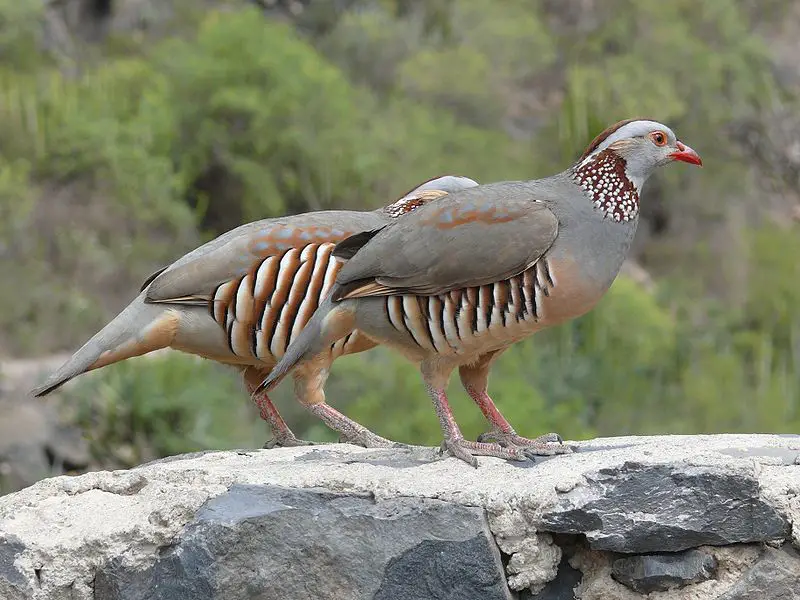
The Barbary partridge is a gamebird in the pheasant family, native to North Africa and surrounding regions such as Gibraltar and the Canary Islands.
It has been introduced to Portugal and Madeira with no recent reports of successful breeding populations outside its original range.
This species prefers open areas such as plains or scrubland, where it feeds on seeds, fruits, insects and small vertebrates like lizards. The males are larger than females with white spots on their chestnut-brown plumage.
Habitat loss due to overgrazing by livestock coupled with hunting pressure have caused declines in population numbers across much of their range making them vulnerable to local extinction if these threats continue unchecked.
Conservation measures are needed for this beautiful bird’s long-term survival.Scientific classification:
| Kingdom | Animalia |
| Phylum | Chordata |
| Class | Aves |
| Order | Galliformes |
| Family | Phasianidae |
| Genus | Alectoris |
| Species | A. barbara |
Also Featured In: Birds of Morocco, Birds Live in Tunisia
5. Eleonora’s Falcon
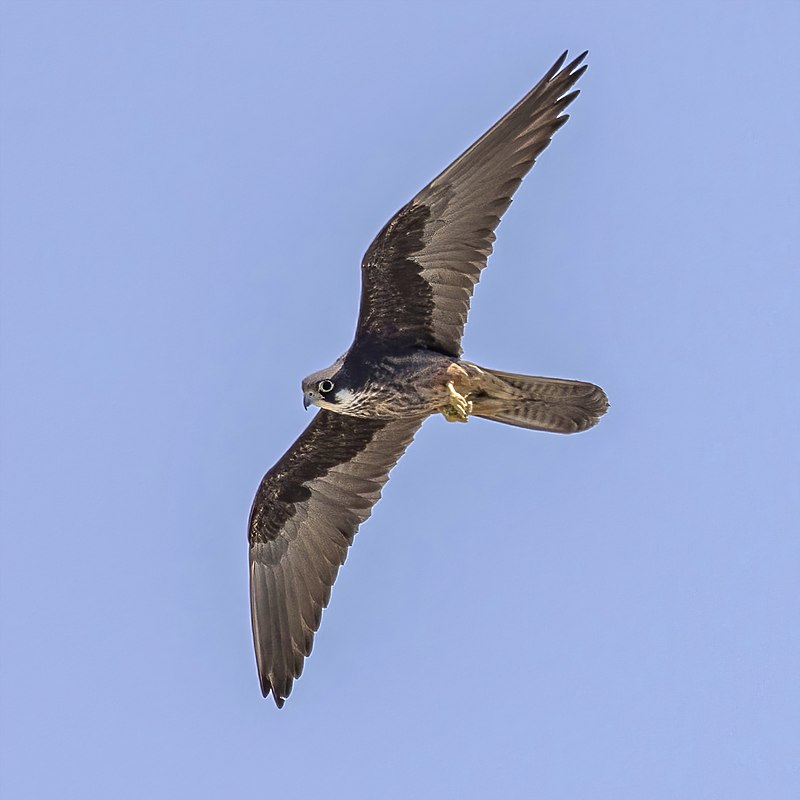
Eleonora’s falcon is a medium-sized bird of prey that belongs to the hobby group of similar species. It has distinct features such as its light brown back, white belly and dark eye stripe.
This stunning creature can be found in parts of Europe, North Africa and Asia Minor where it feeds mainly on lizards, large insects and small birds.
Its conservation status is currently stable due to successful breeding programs across many countries which have helped prevent any further declines in population size.
Eleonora’s Falcon also plays an important role in maintaining balance within ecosystems by controlling pest populations like mice or locusts.
All these attributes make this beautiful raptor a truly remarkable animal worthy of admiration.Scientific classification:
| Kingdom | Animalia |
| Phylum | Chordata |
| Class | Aves |
| Order | Falconiformes |
| Family | Falconidae |
| Genus | Falco |
| Species | F. eleonorae |
Also Featured In: Birds of Madagascar, Birds that Live in Croatia
6. Common Tern
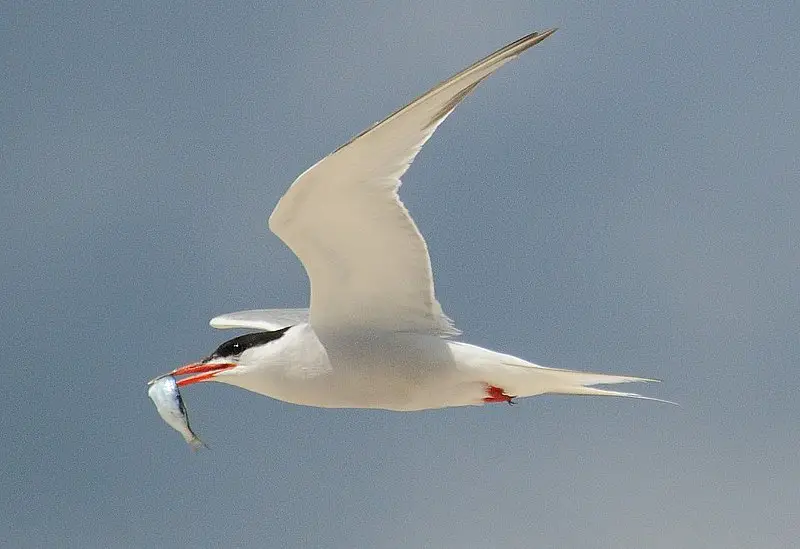
The Common Tern is a seabird in the Laridae family, found all over Europe, Asia and North America. It has a migratory nature, spending its winters in coastal tropical and subtropical regions.
Breeding adults have light grey upperparts with white to very light grey underparts featuring an orange-red beak and black cap.
They are known for their graceful flight as they hunt small fish or insects by diving into water from great heights.
During breeding season they build nests together on islands or sandbars using grasses and other materials to create them.
The female will lay two eggs which she incubates while her mate stands guard nearby; both parents take turns feeding the chicks until it’s time for them fly away.Scientific classification:
| Kingdom | Animalia |
| Phylum | Chordata |
| Class | Aves |
| Order | Charadriiformes |
| Family | Laridae |
| Genus | Sterna |
| Species | S. hirundo |
Also Featured In: Birds of Netherlands, Common Birds Found near Robert Island
7. Woodchat Shrike
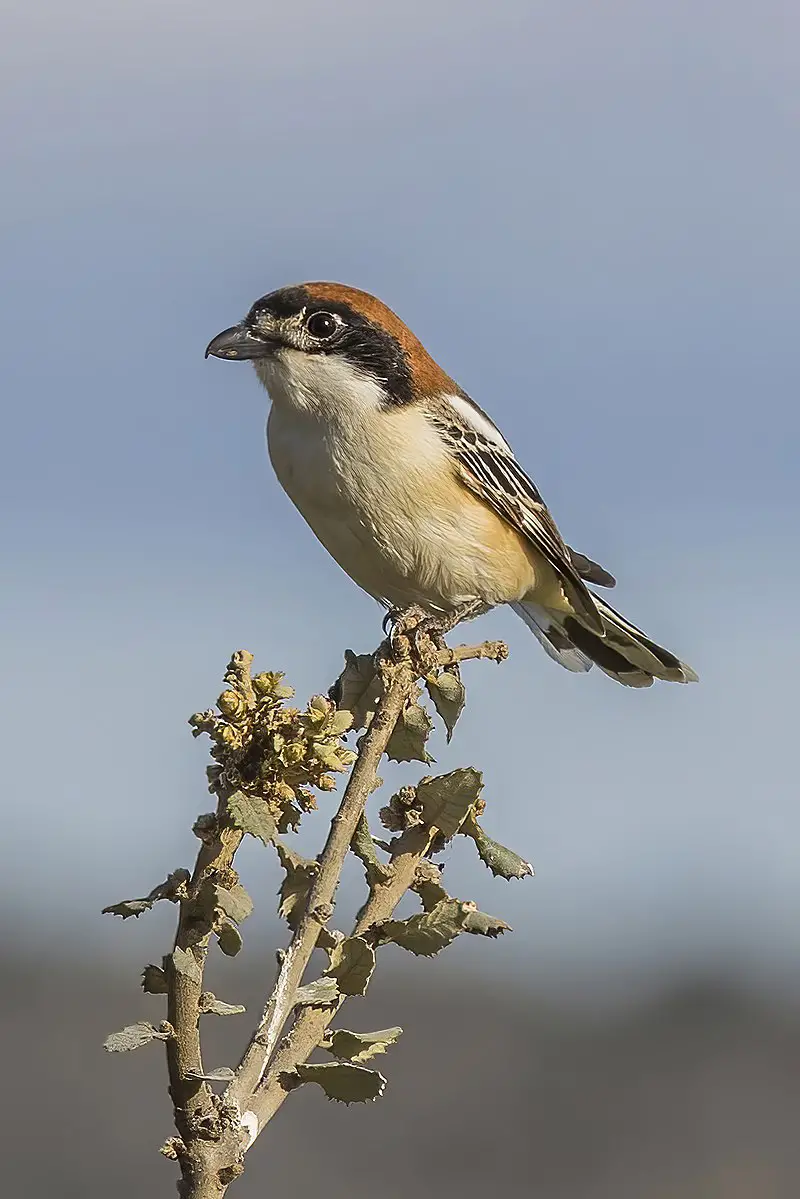
The Woodchat Shrike is a unique species of bird belonging to the shrike family. It has an unmistakable red-brown crown and nape that make it easily distinguishable from other birds.
This species mainly feeds on insects, but will also take small vertebrates if they are available.
They have adapted well to living in open wooded areas with scattered trees such as orchards, where there’s plenty of bare ground for them to hunt on.
During breeding season the Woodchat Shrikes can be found throughout Southern Europe, Middle East and Northwest Africa; while during wintertime these fascinating creatures migrate south towards tropical regions of Africa for warmer weather conditions.
All in all this species makes a fantastic addition to any outdoor environment – so why not give them some extra attention next time you spot one?Scientific classification:
| Kingdom | Animalia |
| Phylum | Chordata |
| Class | Aves |
| Order | Passeriformes |
| Family | Laniidae |
| Genus | Lanius |
| Species | L. senator |
Also Featured In: Most Beautiful birds of Greece, Italian Birds You Should Know
8. Eurasian Griffon Vulture
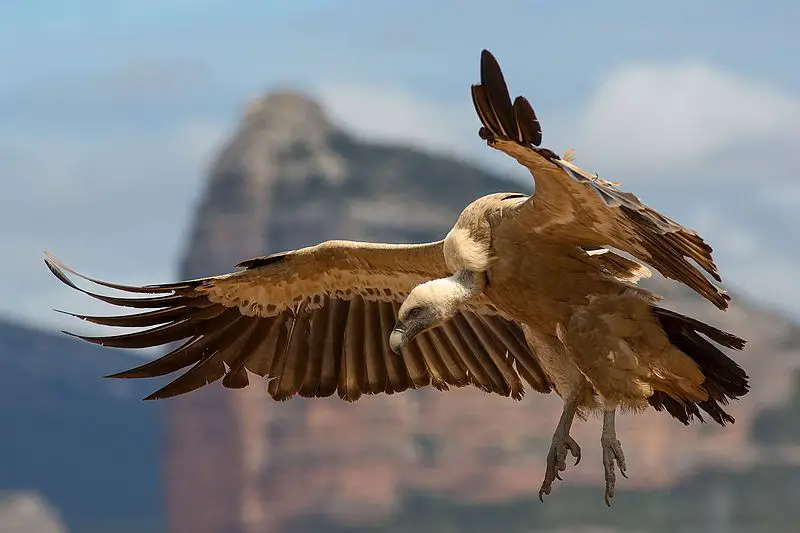
The Eurasian griffon vulture (Gyps fulvus) is an impressive Old World bird of prey. It has a wingspan that can reach up to 4.8 meters and is usually between 93-122 cm in length.
Its body feathers are dark brown with lighter areas on its head, chest and wings while the underside of its tail and flight feathers are white.
This species feeds primarily on carrion but will also scavenge for food when necessary; they have been known to form large groups in order to increase their chances of finding a meal or being able to steal one from another group member.
The Griffon Vulture’s natural habitat ranges across Europe, Asia Minor, North Africa into parts of India as well as some islands off the coast such as Crete and Cyprus.
They nest fairly high up either alone or in small colonies – often using old nests built by other birds like eagles or storks to save time.Scientific classification:
| Kingdom | Animalia |
| Phylum | Chordata |
| Class | Aves |
| Order | Accipitriformes |
| Family | Accipitridae |
| Genus | Gyps |
| Species | G. fulvus |
Also Featured In: Birds found in portugal, Birds You’ll Find in Albania
9. Pallid Swift
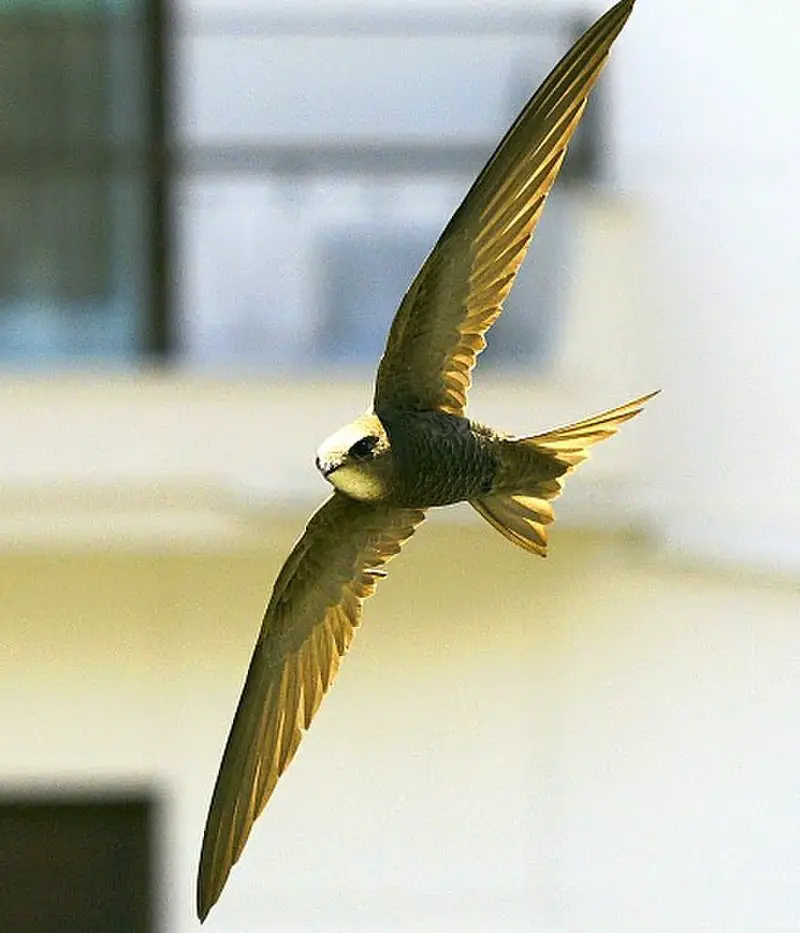
The Pallid Swift is a small bird that looks similar to the barn swallow or house martin, but it belongs to an entirely different order of birds.
This similarity in appearance is due to convergent evolution, which reflects their shared lifestyles.
These swifts have very short legs used only for clinging onto vertical surfaces such as walls and trees.
They are mostly found flying over open countryside during migration season and they feed on insects while in flight.
The feathers of this species range from greyish-brown above with white patches along its wings and tail, while beneath the body usually appears pale yellowish-white.
While these birds can be quite noisy when around roosting sites, they tend to remain silent when migrating through areas where humans live.Scientific classification:
| Kingdom | Animalia |
| Phylum | Chordata |
| Class | Aves |
| Order | Apodiformes |
| Family | Apodidae |
| Genus | Apus |
| Species | A. pallidus |
Also Featured In: Common Birds in Tuscany, Common Birds of Portugal
10. Yelkouan Shearwater
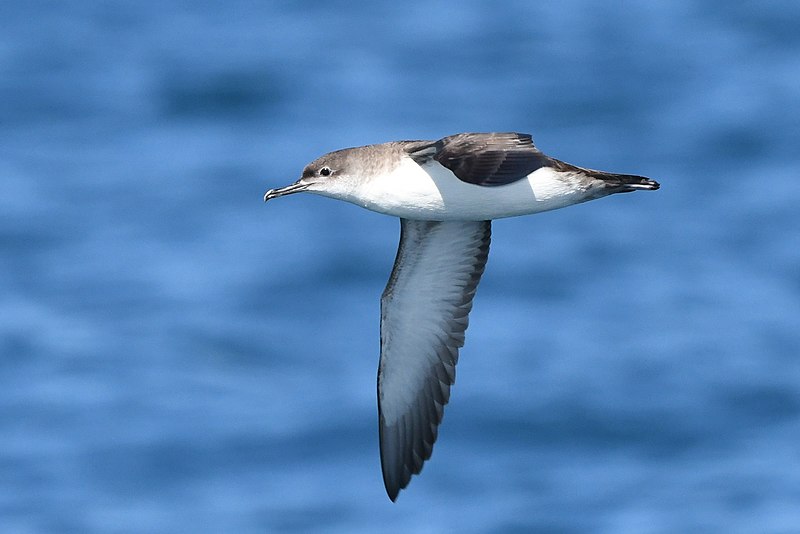
The Yelkouan Shearwater is a medium-sized seabird in the Procellariidae family. It was first described in 1827 by Italian naturalist Giuseppe Acerbi from specimens found near The Bosphorus, Turkey.
This species has also been known as Levantine or Mediterranean shearwater and for some time it was considered to be part of Manx Shearwater (Puffinus puffinus).
They have brownish grey upperparts with white underparts and black legs.
Their wings measure about 35 cm long which helps them during their migrations across the Mediterranean Sea each year between April and October when they leave breeding grounds on islands off south Europe to spend winter months at sea off Africa’s coastlines.
These birds feed mainly on small fish, planktonic crustaceans or squid taken while swimming underwater close to surface but sometimes can take food items directly from water’s surface like most other shearwaters do.Scientific classification:
| Kingdom | Animalia |
| Phylum | Chordata |
| Class | Aves |
| Order | Procellariiformes |
| Family | Procellariidae |
| Genus | Puffinus |
| Species | P. yelkouan |
Also Featured In: Native Birds Of Libya, Most Common Romanian Birds
11. Pin-Tailed Sandgrouse
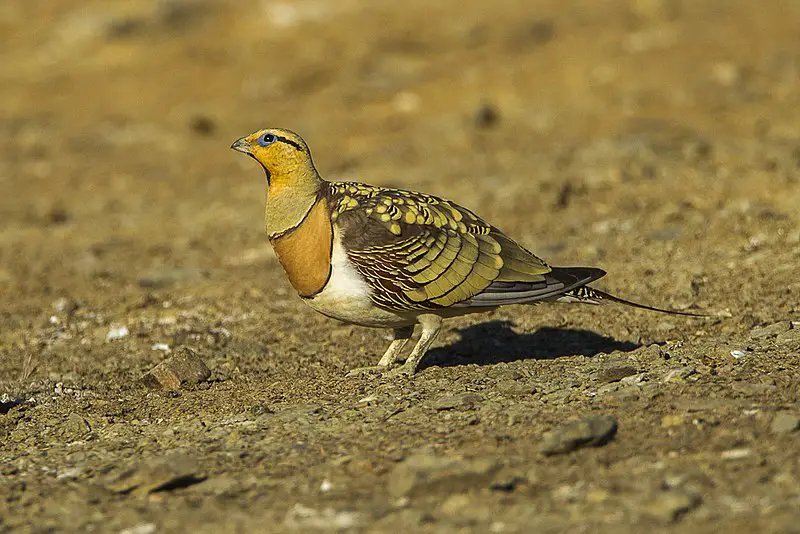
The Pin-tailed Sandgrouse is a medium-sized bird with a small, pigeon-like head and neck and sturdy body. It has long pointed wings that are white underneath, as well as a long tail and fast direct flight.
They congregate in flocks to watering holes at dawn, making loud calls of “kattar-kattar”. This social species lives on open treeless plains or similar areas where they can find food such as seeds or insects.
During breeding season the male will perform an impressive display which involves fanning out its tail feathers while displaying his bright yellow eye patch to attract females.
The male also provides water for the female by sopping up moisture from damp ground in its breast feathers before flying back to meet her at their nest site where she incubates their eggs until hatching occurs.
These birds have adapted over time to survive some harsh climates but now face threats due to habitat destruction and hunting pressure; conservation efforts must be put into place if we are going keep this incredible species alive for future generations.Scientific classification:
| Kingdom | Animalia |
| Phylum | Chordata |
| Class | Aves |
| Order | Pterocliformes |
| Family | Pteroclidae |
| Genus | Pterocles |
| Species | P. alchata |
Also Featured In: Kuwait Birds, Birds That Live in Iraq
12. Spanish Sparrow
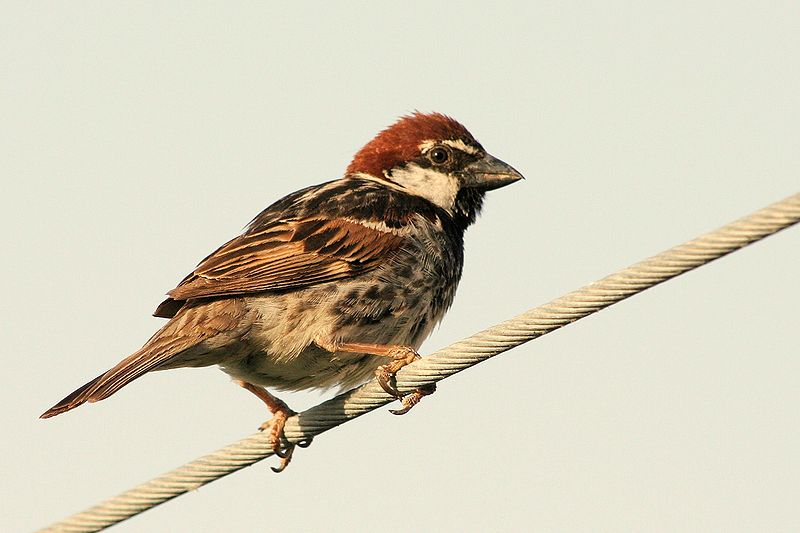
The Spanish sparrow or willow sparrow (Passer hispaniolensis) is a beautiful member of the passerine bird family Passeridae, found mainly in the Mediterranean region and south-west and central Asia.
With its striking colouration – having chestnut brown upperparts with black streaks on its back and wings, white underparts with greyish sidesand a distinctive black line running down either side of its head – it can easily be distinguished from other species.
It shares many physical characteristics with the closely related house sparrow but has some subtle differences such as being slightly smaller in size.
In addition to being an attractive species, they are also very sociable birds often nesting together in colonies making them easy to observe by birdwatchers alike.
Unfortunately hybridisation between these two species complicates their taxonomy which needs further research for clarification.Scientific classification:
| Kingdom | Animalia |
| Phylum | Chordata |
| Class | Aves |
| Order | Passeriformes |
| Family | Passeridae |
| Genus | Passer |
| Species | P. hispaniolensis |
Also Featured In: Bahrain birds, Birds of Lanzarote
13. Spectacled Warbler
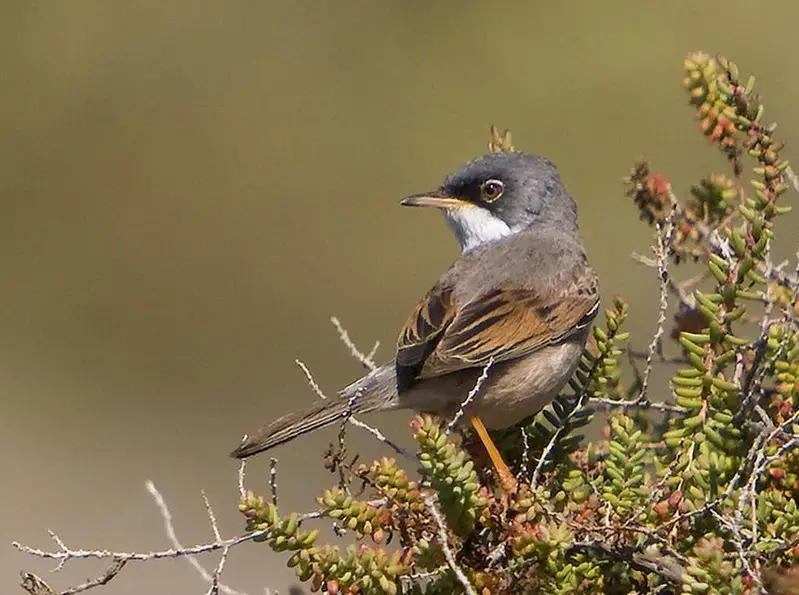
The Spectacled Warbler is a unique species of songbird found across northwest Africa, southwest Europe and the eastern Mediterranean.
It is named for its distinctive black spectacles around the eyes that give it an especially distinct appearance.
The bird has mainly brown-grey plumage with yellowish underparts, making them easy to identify in their natural habitats which include open woodlands and scrubby areas near rivers and coasts.
They typically feed on insects such as flies or caterpillars but will also consume fruit during times when food sources are scarce.
As they tend to be non-migratory birds they remain in their chosen habitat all year round providing much needed insect control services throughout different seasons.Scientific classification:
| Kingdom | Animalia |
| Phylum | Chordata |
| Class | Aves |
| Order | Passeriformes |
| Family | Sylviidae |
| Genus | Curruca |
| Species | C. conspicillata |
Also Featured In: Cabo Verde birds,
14. Blue Rock Thrush
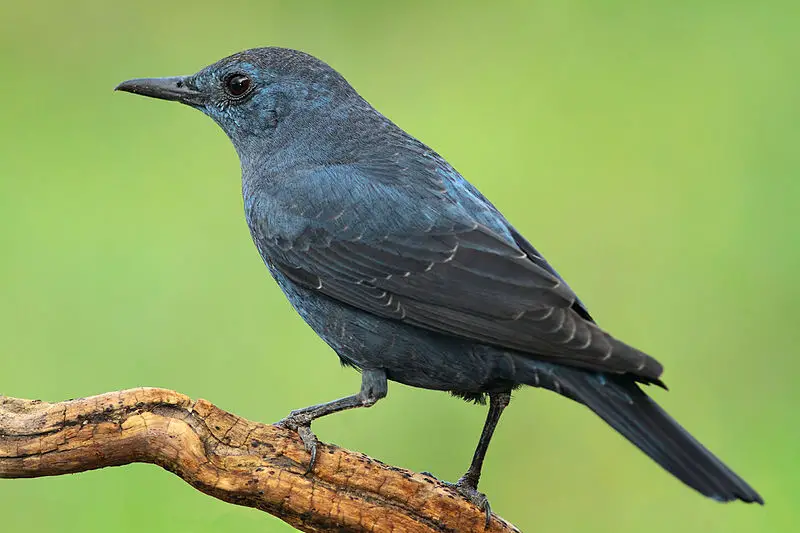
The Blue Rock Thrush is a species of chat that was once placed in the Turdidae family. It resides across many different regions, including southern Europe, northwest Africa, Central Asia and northern China to Malaysia.
This bird has even been adopted as Malta’s national bird; it is called “Merill” there.
The Blue Rock Thrush lives within rocky areas where they can find shelter from predators and build their nests on cliffs or steep slopes with rocks.
They are very agile birds with long wings enabling them to swoop in for prey quickly while also allowing them to fly away rapidly if need be.
Their diet consists mainly of insects but will occasionally eat small fruits and berries when available too.Scientific classification:
| Kingdom | Animalia |
| Phylum | Chordata |
| Class | Aves |
| Order | Passeriformes |
| Family | Muscicapidae |
| Genus | Monticola |
| Species | M. solitarius |
Also Featured In: Malta birds, Birds of Kobe
15. Yellow-Legged Gull
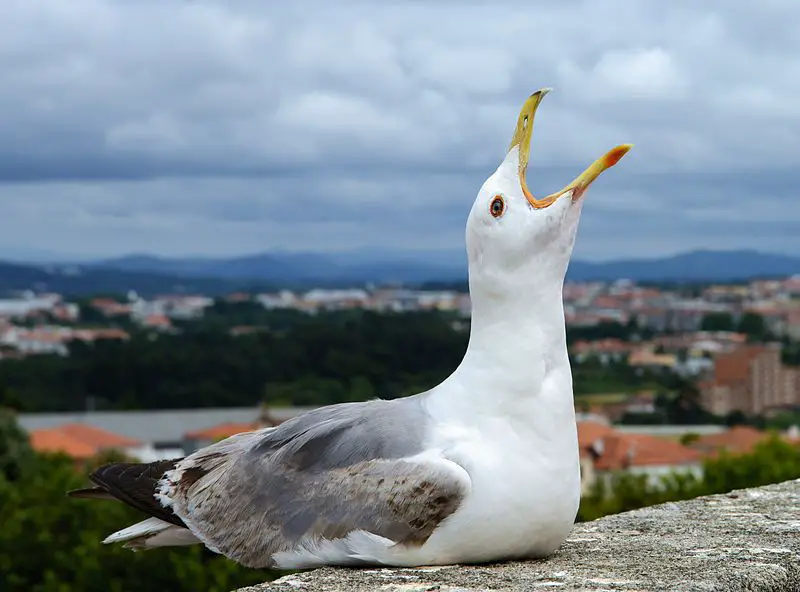
The Yellow-legged Gull is a large bird found mainly in Europe, the Middle East and North Africa.
It was previously considered to be either a subspecies of the Caspian gull or Herring Gull but has recently been identified as its own species.
The name Larus comes from Latin and likely refers to seabirds in general.
This species has yellow legs, white head with dark eyespots on each side, gray wings with black tips and pinkish legs.
They have curved bills that are yellow at the base which turn red near the tip during breeding season.
These birds feed mainly on fish but also scavenge for food when necessary such as insects, crustaceans etc.. The Yellow-legged Gull can often be seen along coastlines soaring high above fishing boats searching for their next meal.Scientific classification:
| Kingdom | Animalia |
| Phylum | Chordata |
| Class | Aves |
| Order | Charadriiformes |
| Family | Laridae |
| Genus | Larus |
| Species | L. michahellis |
Also Featured In: Gulls Species, Flight Birds You Should Know
16. Common Moorhen
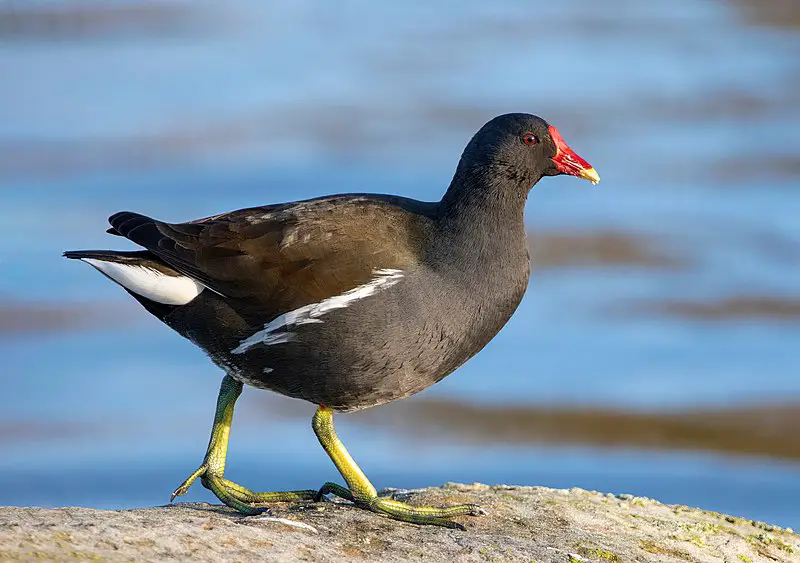
The common moorhen, also called waterhen or swamp chicken, belongs to the rail family and is widespread across various regions of the Old World.
These birds prefer to inhabit wetlands like canals, marshes, and ponds with rich vegetation. They are not found in polar regions or some tropical rainforests.
The species is known for its distinctive red forehead shield, which becomes more prominent during breeding season. Common moorhens usually feed on aquatic plants, small fishes, and invertebrates.
They are excellent swimmers and divers, but are also able to walk on floating vegetation. When threatened, they can flee by diving and swimming underwater.
Overall, common moorhens are fascinating birds that add to the diversity of wetland ecosystems.Scientific classification:
| Kingdom | Animalia |
| Phylum | Chordata |
| Class | Aves |
| Order | Gruiformes |
| Family | Rallidae |
| Genus | Gallinula |
| Species | G. chloropus |
Also Featured In: Water Birds Live around Us, Birds of Kauai, Hawaii
17. Cirl Bunting
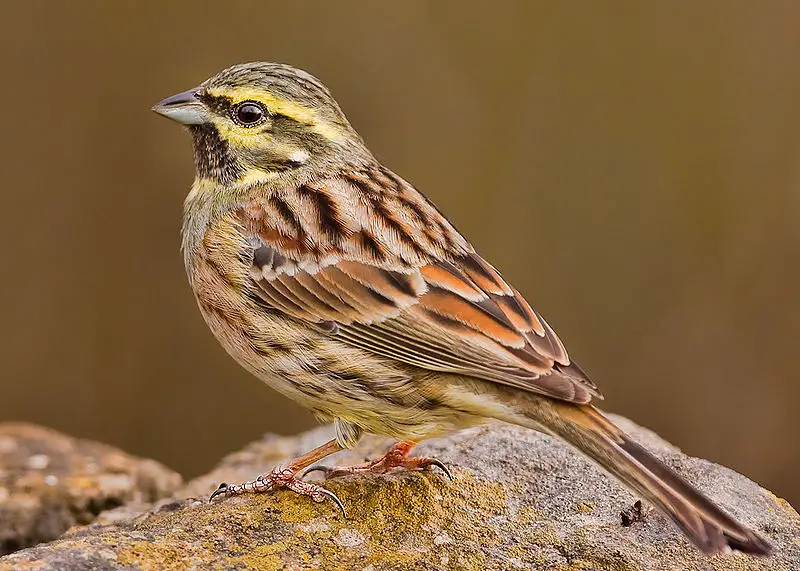
The Cirl Bunting is a passerine bird that belongs to the Emberizidae family. It is commonly found in southern Europe, including Mediterranean islands and north Africa.
Unlike other species, it is a resident bird and does not travel during winters. The bird prefers to reside in open areas with some scrub and is prevalent in such regions.
The finches and Emberizidae families got separated into two distinct groups by modern authors.
The Cirl Bunting is a warm-weather bird that breeds in southern Europe, often in areas with light vegetation. Its scientific name is Emberiza cirlus.Scientific classification:
| Kingdom | Animalia |
| Phylum | Chordata |
| Class | Aves |
| Order | Passeriformes |
| Family | Emberizidae |
| Genus | Emberiza |
| Species | E. cirlus |
Also Featured In: Most Popular Birds in Mallorca,
18. Dartford Warbler
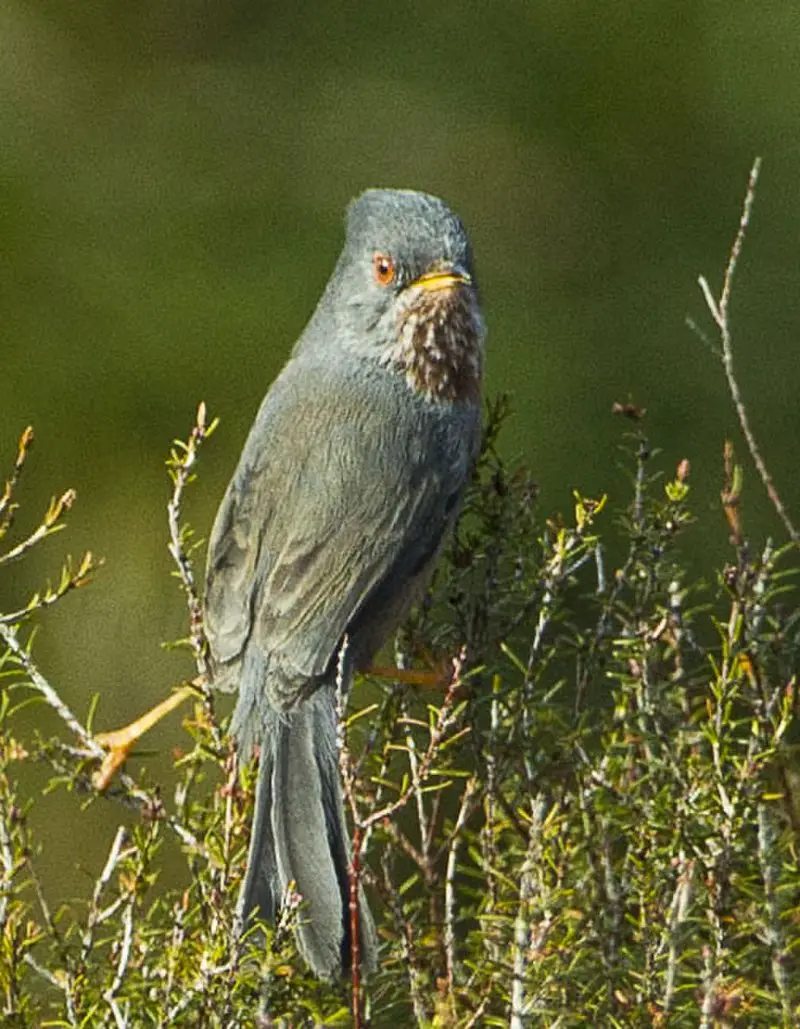
The Dartford warbler is a small bird found in parts of Europe and Africa. The male has grey-brown upperparts and reddish-brown underparts, with a white patch on the belly.
It has light speckles on its throat and a red eye-ring. Their tails are long and thin, while their bills are pointed and thin. The females have a similar appearance.
Dartford warblers prefer warmer climates and are commonly found in heathlands, scrub, and other open areas with low vegetation.
They are known for their loud and distinctive song, which is often heard during their mating season. Despite their small size, they are hardy birds and can survive in harsh environments.
Overall, the Dartford warbler is a fascinating and beautiful bird that is well adapted to its natural habitat.Scientific classification:
| Kingdom | Animalia |
| Phylum | Chordata |
| Class | Aves |
| Order | Passeriformes |
| Family | Sylviidae |
| Genus | Curruca |
| Species | C. undata |
Also Featured In: European Birds,
19. Sardinian Warbler
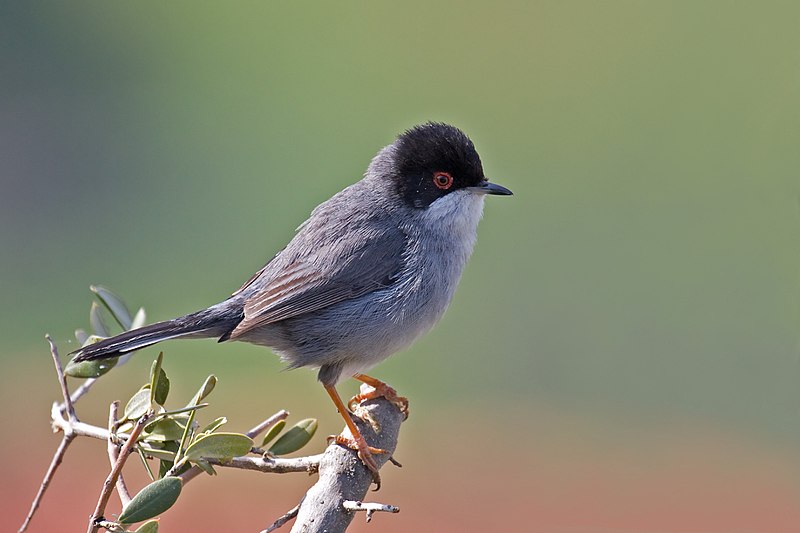
The Sardinian warbler is a species of typical warbler commonly found in the Mediterranean region. This bird has distinctive male and female plumages. The male has a black head, grey back, and whitish underparts, along with a white throat and striking red eyes.
The female has similar colors but with a brownish hue. There can be some variation in plumage even in the same area, with some birds having reddish upper- and/or undersides.
These birds are known for their lively and musical songs, performed both during breeding season and for territorial purposes.
Sardinian warblers are frequently found in scrubby habitats, including maquis and garrigue, where they feed on insects and other small invertebrates.
Despite their relatively common status, these birds are still vulnerable to threats such as habitat loss and predation by invasive species.Scientific classification:
| Kingdom | Animalia |
| Phylum | Chordata |
| Class | Aves |
| Order | Passeriformes |
| Family | Sylviidae |
| Genus | Curruca |
| Species | C. melanocephala |
Also Featured In: Fuerteventura Island Birds You Need to See,
20. Calandra Lark
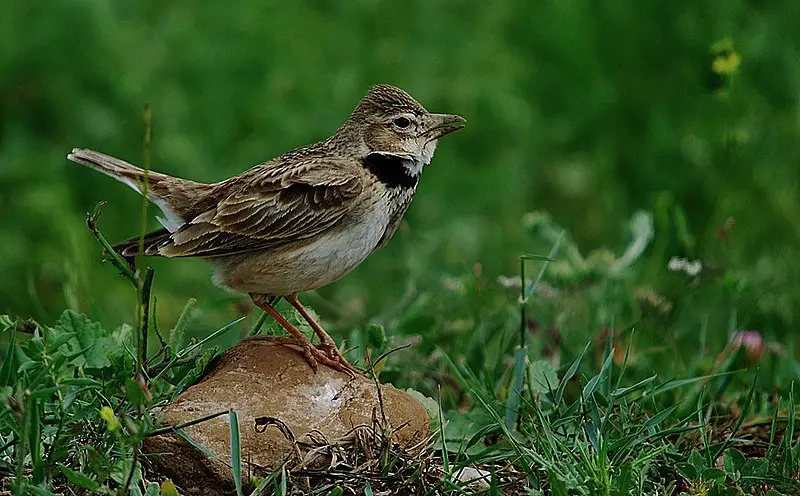
The Calandra lark is a bird that can be found in warm temperate countries around the Mediterranean, Turkey, Iran and Russia. It belongs to the genus Melanocorypha and was previously classified under the Alauda genus.
This bird species has a relative called the bimaculated lark that exists further east. The name Melanocorypha comes from the Greek word “melas” which means black and “koryphe” meaning crown. This bird is known for its beautiful black markings on its head and face.
The Calandra lark is a ground-dwelling bird that prefers open habitats such as grasslands, scrublands, and agricultural fields. Its diet primarily consists of insects, seeds and occasionally small vertebrates.
This bird species is known for its beautiful and complex songs that are used to communicate with other members of its species.
Despite their wide range, the Calandra lark is considered a threatened bird species due to habitat loss and degradation.Scientific classification:
| Kingdom | Animalia |
| Phylum | Chordata |
| Class | Aves |
| Order | Passeriformes |
| Family | Alaudidae |
| Genus | Melanocorypha |
| Species | M. calandra |